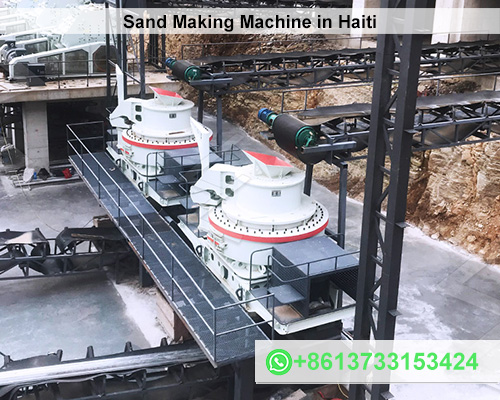Silica Sand Processing Plant Equipment in the Philippines
Silica sand, known for its high silica content and remarkable industrial applications, is an essential material in many industries. In the Philippines, where natural resources are abundant, silica sand is a valuable commodity primarily used in the manufacturing of glass, electronics, and construction materials. This article outlines the silica sand processing plant equipment needed in the Philippines, the processing stages, and essential considerations for setting up a plant.
1. Importance of Silica Sand in the Philippines
Silica sand in the Philippines has multiple applications due to its unique properties:
- Glass Manufacturing: The high silica content in silica sand is ideal for glass production.
- Electronics: As the Philippines is a hub for electronics manufacturing, silica sand is in high demand for producing components like semiconductors.
- Construction: Silica sand serves as a primary material in cement and concrete production.
- Renewable Energy: It plays a key role in photovoltaic (solar) cell production.
2. Overview of Silica Sand Processing
The process of transforming raw silica sand into refined, high-quality silica involves several stages. The goal is to remove impurities and achieve the desired particle size and quality for specific industrial applications.

Primary Stages in Silica Sand Processing
- Extraction and Transport: Silica sand is mined from sand dunes, riverbeds, or quartzite rock formations. Once extracted, it is transported to a processing facility.
- Washing and Screening: The raw silica sand is washed to remove dirt, clay, and other contaminants. Screening follows, where sand is separated into different sizes.
- Grinding and Classification: This step ensures sand particles meet industry standards. Sand is ground and classified based on particle size.
- Flotation and Magnetic Separation: Chemical processes like flotation or magnetic separation help remove mineral impurities, enhancing silica content.
- Drying and Packaging: The final step involves drying the processed sand and packaging it for transport to various industries.
3. Essential Equipment for Silica Sand Processing
A silica sand processing plant in the Philippines requires a range of equipment designed for efficient and high-quality output. Below are the primary machines and equipment essential for silica sand processing:
3.1 Crushing Equipment
- Jaw Crusher: Essential for the initial stage of crushing. It reduces large rocks and silica-bearing stones to smaller sizes.
- Cone Crusher: Used for secondary crushing. Ensures uniform size, critical for the downstream processing stages.
3.2 Grinding and Milling Equipment
- Ball Mill: Commonly used for fine grinding of silica sand particles to a uniform size.
- Rod Mill: Alternative to a ball mill; it helps achieve a more uniform particle size, particularly in finer applications.
3.3 Washing and Screening Equipment
- Sand Washing Machine: Removes impurities, silt, and clay from raw silica sand, improving purity levels.
- Vibrating Screen: Classifies and sorts sand into different sizes, allowing for tailored applications.
3.4 Separation Equipment
- Flotation Machine: Used in cases where mineral impurities must be chemically removed. It employs chemical reagents to separate impurities from silica sand.
- Magnetic Separator: Essential for removing ferrous impurities from the silica sand. These impurities, like iron oxide, reduce the quality of the sand for applications such as glass making.
3.5 Dewatering and Drying Equipment
- Hydrocyclone: Used for separating water from sand slurry after washing. Ensures a high level of dryness.
- Rotary Dryer: Essential for drying silica sand before packaging. It improves quality by removing moisture content.
3.6 Auxiliary Equipment
- Conveyor Belts: Essential for transporting silica sand across various stages in the plant.
- Dust Collection Systems: Help maintain a clean environment in the processing plant and reduce airborne silica particles, enhancing worker safety.
4. Setting Up a Silica Sand Processing Plant in the Philippines
Establishing a silica sand processing plant requires careful planning, investment, and regulatory adherence. Here are key steps to consider:
- Site Selection: Proximity to silica sand mines and accessible transport routes.
- Environmental Permits: Compliance with environmental regulations is essential, especially concerning water usage and dust management.
- Local Workforce: Hiring skilled labor, ideally with experience in mineral processing.
- Investment in High-Quality Equipment: Ensuring the machinery meets industry standards for efficient processing.
- Safety and Training: Training staff in handling equipment safely and mitigating silica dust exposure.
5. Benefits of Establishing a Silica Sand Processing Plant in the Philippines
The Philippines has a rich silica sand supply, competitive labor costs, and favorable trade links with other Asian markets. By establishing local processing plants, companies can:
- Reduce Import Dependency: Meeting domestic silica needs locally minimizes the reliance on imported materials.
- Boost Employment: Silica sand processing plants contribute to local employment and upskilling of workers.
- Increase Export Potential: High-quality processed silica can be exported to international markets, boosting the local economy.
6. Future Outlook for Silica Sand Processing in the Philippines
The increasing demand for renewable energy, electronics, and glass products will continue to drive silica sand processing in the Philippines. Investments in automation, technology upgrades, and environmentally-friendly practices will be crucial for ensuring sustainable production.
Conclusion
Silica sand processing plants in the Philippines play a crucial role in multiple industries, from glass to electronics manufacturing. By investing in efficient equipment and ensuring compliance with local regulations, companies can capitalize on the rich silica resources in the region and meet both local and international market demands.









